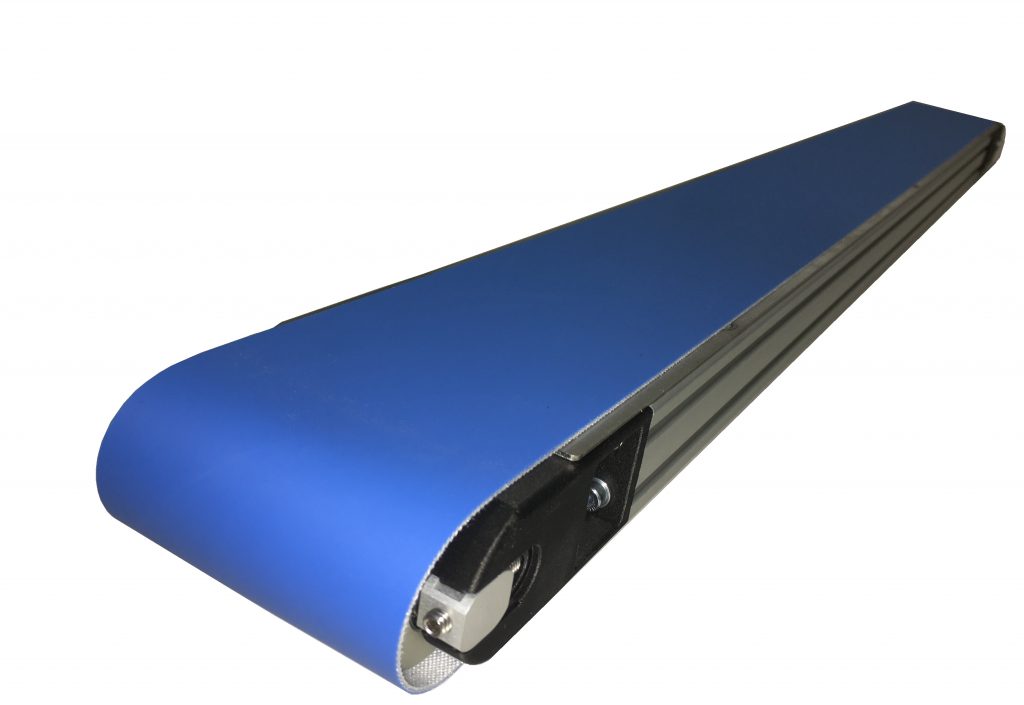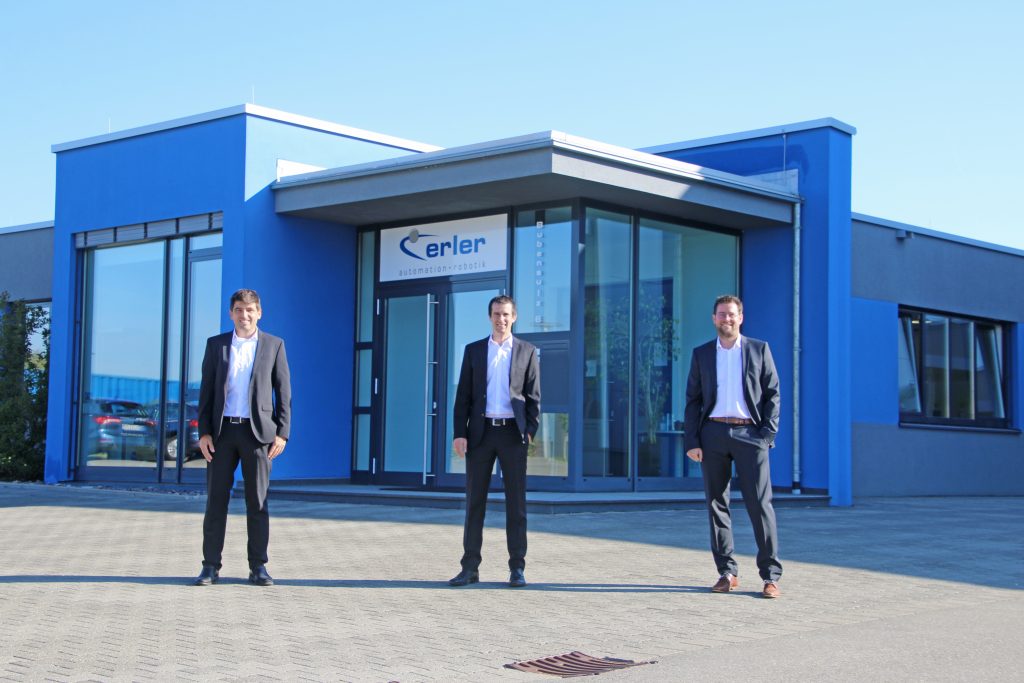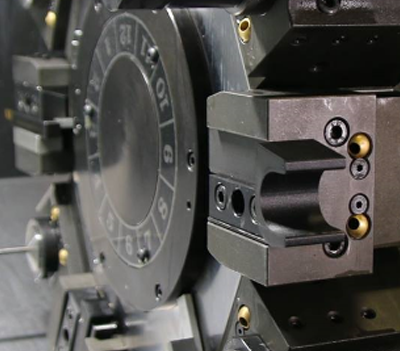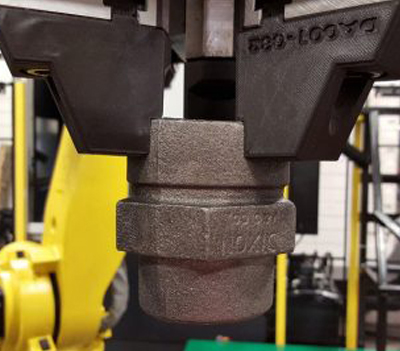Bringing tomorrow’s production into today
Automation at erler GmbH
Passion of erler GmbH: automation technology and robotics.
Based in Germany, Dormettingen, erler GmbH builds robot cells for handling technology to position customer-specific workpieces from A to B, subject to certain cycle time and quality requirements. The supply and removal of parts is also an issue.
Thus, erler GmbH manufactures semi-automatic and fully automatic machines that are used in assembly, machine loading and unloading or test automation.
Project Goals
More flexibility and economic efficiency thanks to in-house production
The challenge for erler GmbH was that a lot of time and money had to be spent on special machine construction as well as on individual and development parts.
Previously, the workpieces were outsourced to various suppliers for external production. The aim was now to bring the added value in-house in order to achieve more flexibility, independence and economic efficiency.
Now it is possible to react much faster, as Managing Director Michael Müller explains: „When we have a part for gripping, we briefly consider ‚is it even possible to manufacture a gripper for it?‘ We print a prototype overnight and can test it directly in the morning. We don‘t have to spend any more money ordering from a third-party supplier!“

At a glance
Implementation
Excellent tensile strength and quality for mechanical engineering thanks to composite materials
At the SolidWorks Experience Day, Michael Müller, one of the three managing directors of erler GmbH, got to know the Markforged 3D printers.
„We evaluated two different options: One was to purchase a CNC milling machine for aluminium and POM and the other was to get into additive manufacturing. They compared cost, quality, manufacturing time, flexibility, innovation and manpower.“
If they had gone into machining, they would have had to hire an additional industrial machinist and start from scratch.
The main reasons for additive manufacturing were that erler GmbH found the printing process with fibre composites from Markforged to have very good tensile strength and quality for mechanical engineering and can manufacture parts flexibly now – without an additional machinist.
„For example, we manufacture workpiece holders, gripper fingers, sensor and cylinder holders up to possible assemblies for conveyor belts with the Markforged 3D printers,“ says Michael Müller, who is responsible for mechanical engineering as well as technical sales.
Request a demo!
Feel the strength of continuous fiber for yourself.

Solution
New flexibility and independence
When it was announced that a 3D printer intended to be used in-house, the employees reacted partly critically, partly fascinated. But even the first tests on the tensile strength of the components convinced the critics. „It‘s great for the constructors to work with it, they are really happy!“
The Mark Two is used exclusively by the mechanical construction department, which in turn develops machines for various industries such as medicine, automotive, plastics processing or the metal-cutting sector.
Opinions still differ among customers. For example, when it comes to the high demands of medical technology, customers do not yet trust a 3D printed part to perform as well as a machined, surface-finished part. Here, a fibre composite material competes with an anodised aluminium part. This is still viewed sceptically and there is still some convincing to be done. Plastic parts are even used in the medical technology clean room.
In the medical area, a stainless steel workpiece is screwed to the point where, for example, the gripper touches the product. In this way, erler GmbH can meet the FDA requirements for surfaces that come into contact with the product. The same is also applied to parts for abrasion, so that the stressed areas are made of wear-resistant materials.
Various suppliers also deliver 3D printed parts, but 95% are milled because the tensile strength cannot be achieved with their printers. The opinion of 3D printed parts is often still that they are brittle, have nice surfaces, but are not suitable for mechanical engineering. This is different with the Markforged machines.
For example, the robot flange and the grippers themselves are now printed, as these are very workpiece-specific. Whether a medical technology assembly or an automotive bent part is to be gripped – the gripper must be individually designed for the environmental conditions.
There are also various accessories for feeding and removing parts to and from the robot: Holders for conveyor belts, holders for flexible feeders, parts for the conveyor belts themselves or sensor holders.


The Future
Learning new techniques and building up knowledge
The constructors are constantly learning new things and are happy to have such a reliable production machine with them.
„The goal is to offer our customers added value with additive manufacturing. For example, we can also support our customers with additional assemblies for automation technology, such as printed grippers or printed conveyor belts (picture on page 2).
In the next step, we want to look at components and integrated inserts in additive manufacturing as well as metal 3D printing with the Metal X,“ says Michael Müller.
„With the Markforged Mark Two we have a process-safe, reliable and innovative production machine – without an additional machinist!“ – Michael Müller, Managing Director of erler GmbH

© Zollern Alb Kurier – The picture shows the three managing directors of erler from left: Michael Müller, Holger Erler, Jochen Erler
Learn more about the applications with the Desktop Series!
How do I design correctly for filament 3D printing? What do users say and where can I find more information? – This is the right place for you! We listed some information leading you directly to the matching answers.




